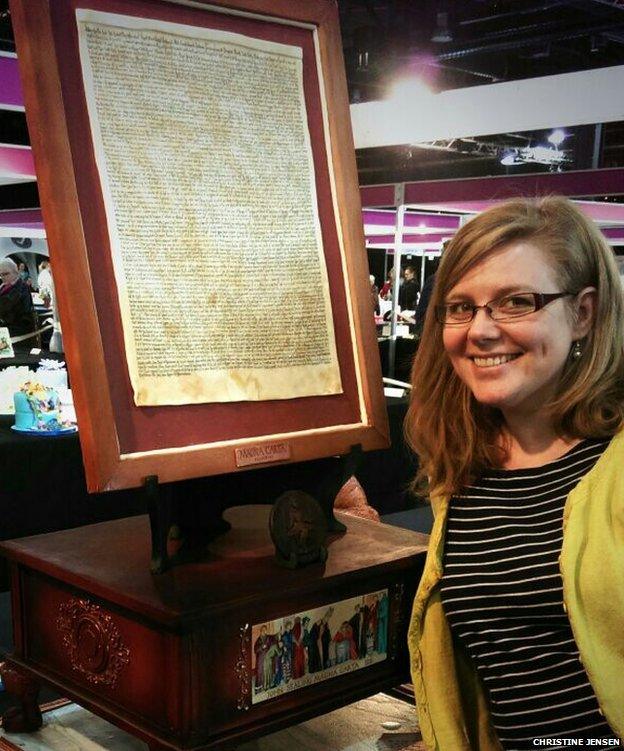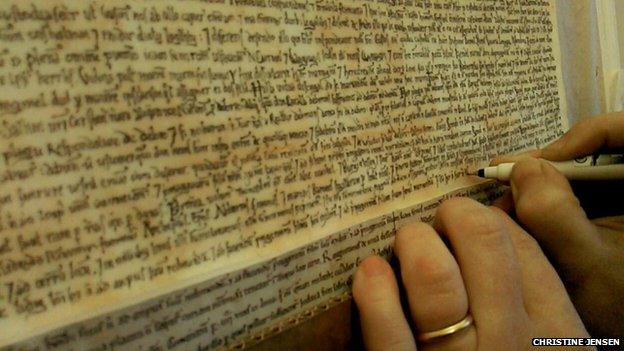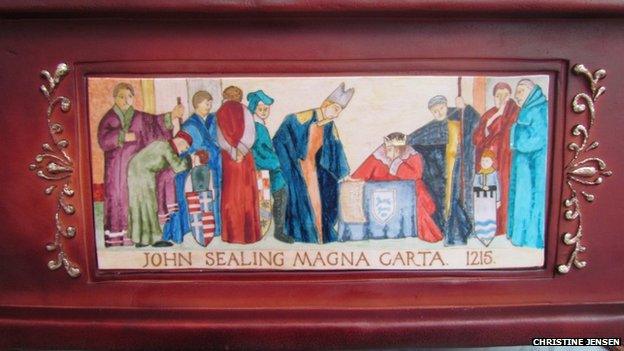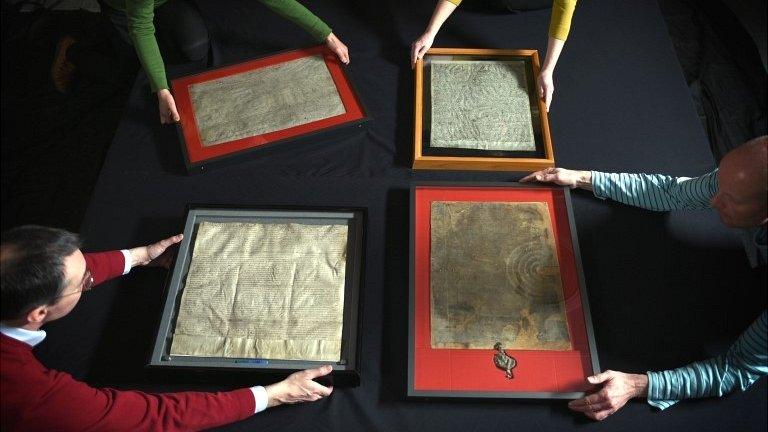Magna Carta cake on display at Salisbury Cathedral
- Published

Christine Jensen took nearly 100 hours to create a copy of the original document and a base
An exact replica of the Magna Carta, made out of cake, has gone on display at Salisbury Cathedral.
Baker Christine Jensen, from Penzance, took 94 hours to make the clone of the document, which set out the ideals of liberty and justice in 1215.
The edible version is on show while Salisbury Cathedral's copy of the original, one of four that have survived, is not on display.
Ms Jensen, 40, said the cake was a "huge undertaking".
"It is a one-to-one ratio, historically accurate representation in fondant, so you could actually eat the document if you wanted to," she said.
"Creatively and from a design point of view it was a lot of work. However, it was a story worth celebrating."

It took 22 hours for her to rewrite 4,000 words in mediaeval Latin
Ms Jensen, who started making cakes professionally last year, said she had to cut down the nib of an edible ink pen in order for it to be fine enough to produce the tiny lettering.
It took 22 hours to rewrite the 4,000 words of mediaeval Latin.
Her work also includes the frame and the base, which features an edible version of Frank Wood's painting of King John sealing the Magna Carta at Runnymede.
The cathedral's copy of the document is to go back on display to the public on 7 March, as part of a new exhibition marking the 800th anniversary of the Magna Carta.

A hand painted panel shows King John being forced to seal the Magna Carta
David Coulthard, from the cathedral, said he was "delighted" with the temporary replacement.
"The anniversary year has seen the Magna Carta referenced in many settings but this one is really unusual," he said.
"It's wonderful to be able to share Christine's work with a wide audience, especially as the real thing won't be on show until our new exhibition opens."
The original document was recently on display at the British Library and the House of Lords in London, alongside the other three surviving copies.
- Published20 February 2015

- Published8 February 2015
.jpg)
- Published2 February 2015

- Published2 February 2015
